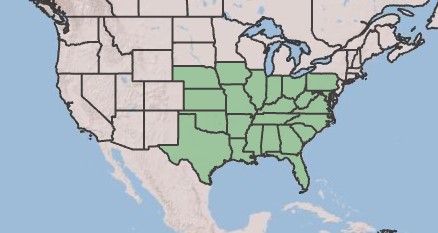Difference between revisions of "Vitis cinerea"
(Created page with "{{subst:Template:PlantName}}") |
(→Habitat) |
||
| (3 intermediate revisions by 2 users not shown) | |||
| Line 2: | Line 2: | ||
<!-- Get the taxonomy information from the NRCS Plants database --> | <!-- Get the taxonomy information from the NRCS Plants database --> | ||
{{taxobox | {{taxobox | ||
| − | | name = | + | | name = Vitis cinerea |
| image = | | image = | ||
| image_caption = Photo by | | image_caption = Photo by | ||
| Line 8: | Line 8: | ||
| divisio = Magnoliophyta - Flowering plants | | divisio = Magnoliophyta - Flowering plants | ||
| classis = Magnoliopsida - Dicots | | classis = Magnoliopsida - Dicots | ||
| − | | ordo = | + | | ordo = Rhamnales |
| − | | familia = | + | | familia = Vitaceae |
| − | | genus = '' | + | | genus = ''Vitis'' |
| − | | species = ''''' | + | | species = '''''V. cinerea''''' |
| − | | binomial = '' | + | | binomial = ''Vitis cinerea'' |
| − | | binomial_authority = ( | + | | binomial_authority = (Engelm.) Engelm. ex Millard |
| − | | range_map = | + | | range_map = VITI_CINE_dist.jpg |
| − | | range_map_caption = Natural range of '' | + | | range_map_caption = Natural range of ''Vitis cinerea'' from USDA NRCS [https://plants.sc.egov.usda.gov/home/plantProfile?symbol=VICI2 Plants Database]. |
}} | }} | ||
| − | Common name: | + | Common name: graybark grape, pigeon Grape |
==Taxonomic Notes== | ==Taxonomic Notes== | ||
Synonyms: | Synonyms: | ||
| Line 25: | Line 25: | ||
==Distribution== | ==Distribution== | ||
==Ecology== | ==Ecology== | ||
| − | + | ===Habitat=== | |
| + | ''V. cinerea'' occurs in natural communities such as wet thickets, swampy forests, and floodplain woodlands. It is also successful in disturbed areas such as ditches, roadsides, powerline corridors, and forest boundaries.<ref name = fsu> Florida State University Robert K. Godfrey Herbarium database. URL: http://herbarium.bio.fsu.edu. Last accessed: June 2023. Collectors: Roberty K. Godfrey, Karen MacClendon, and Travis MacClendon. States and counties: Florida: Calhoun, Gadsden, and Wakulla. Georgia: Decatur.</ref> | ||
| + | |||
| + | Associated species of ''V. cinerea'' include ''[[Cornus foemina]]'', ''[[Pinus elliottii]]'', and ''[[Liquidambar styraciflua]]''.<ref name=fsu/> | ||
<!--===Phenology===--> <!--Timing off flowering, fruiting, seed dispersal, and environmental triggers. Cite PanFlora website if appropriate: http://www.gilnelson.com/PanFlora/ --> | <!--===Phenology===--> <!--Timing off flowering, fruiting, seed dispersal, and environmental triggers. Cite PanFlora website if appropriate: http://www.gilnelson.com/PanFlora/ --> | ||
<!--===Seed dispersal===--> | <!--===Seed dispersal===--> | ||
Latest revision as of 17:43, 21 June 2023
| Vitis cinerea | |
|---|---|
| Scientific classification | |
| Kingdom: | Plantae |
| Division: | Magnoliophyta - Flowering plants |
| Class: | Magnoliopsida - Dicots |
| Order: | Rhamnales |
| Family: | Vitaceae |
| Genus: | Vitis |
| Species: | V. cinerea |
| Binomial name | |
| Vitis cinerea (Engelm.) Engelm. ex Millard | |

| |
| Natural range of Vitis cinerea from USDA NRCS Plants Database. | |
Common name: graybark grape, pigeon Grape
Contents
Taxonomic Notes
Synonyms:
Description
Distribution
Ecology
Habitat
V. cinerea occurs in natural communities such as wet thickets, swampy forests, and floodplain woodlands. It is also successful in disturbed areas such as ditches, roadsides, powerline corridors, and forest boundaries.[1]
Associated species of V. cinerea include Cornus foemina, Pinus elliottii, and Liquidambar styraciflua.[1]
Conservation, cultivation, and restoration
Cultural use
Photo Gallery
References and notes
- ↑ 1.0 1.1 Florida State University Robert K. Godfrey Herbarium database. URL: http://herbarium.bio.fsu.edu. Last accessed: June 2023. Collectors: Roberty K. Godfrey, Karen MacClendon, and Travis MacClendon. States and counties: Florida: Calhoun, Gadsden, and Wakulla. Georgia: Decatur.